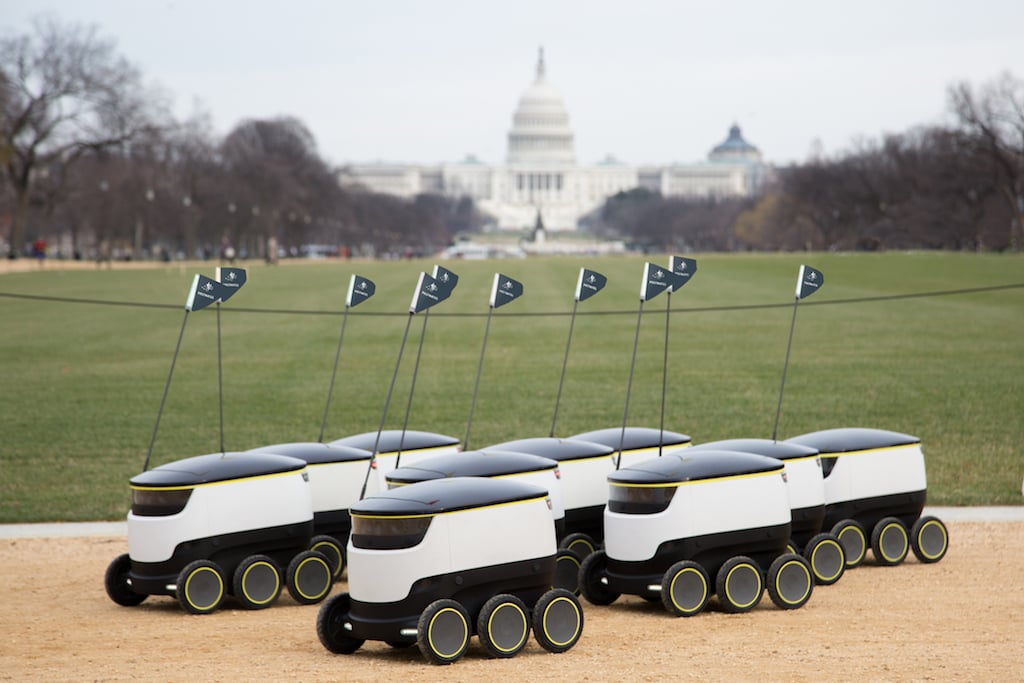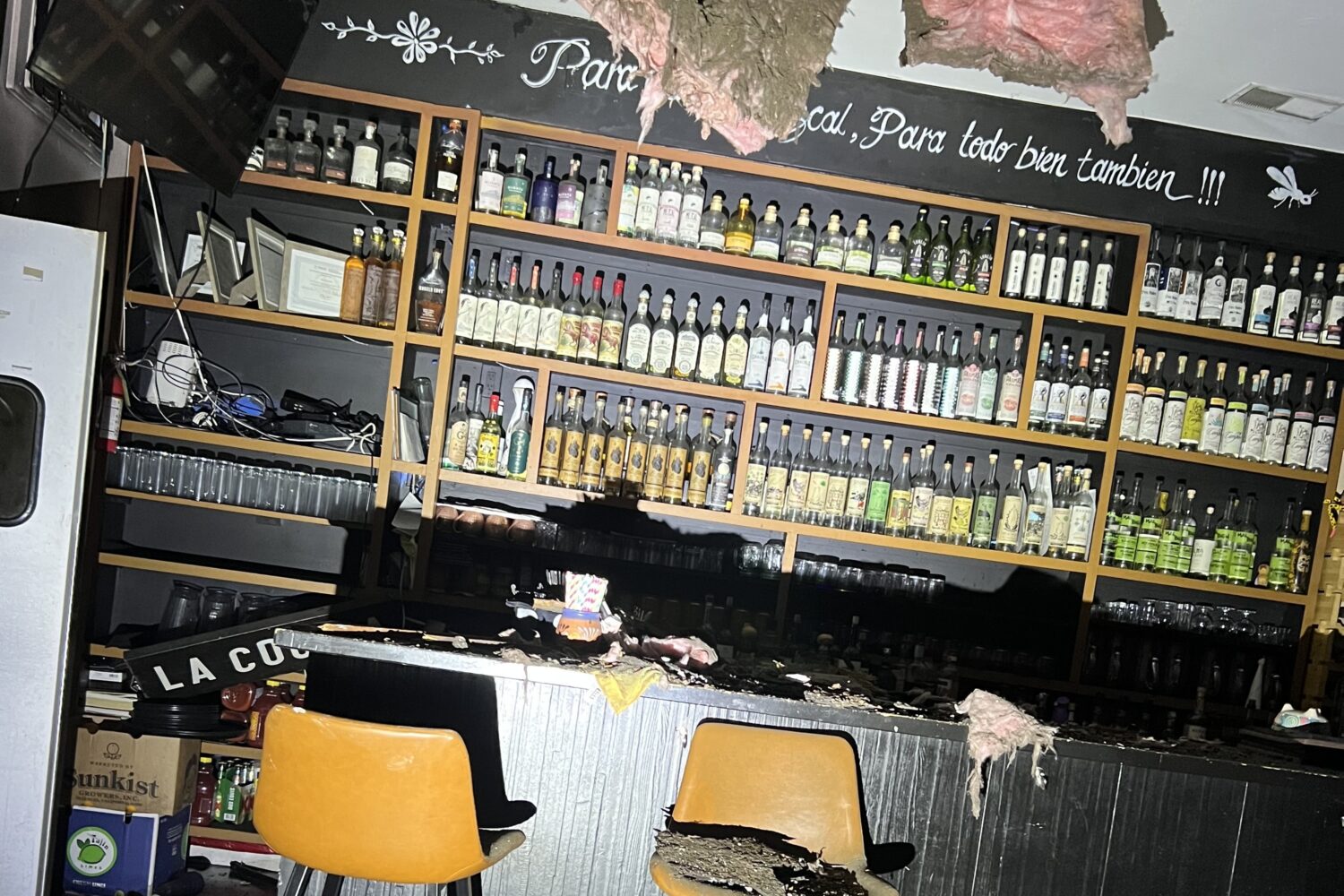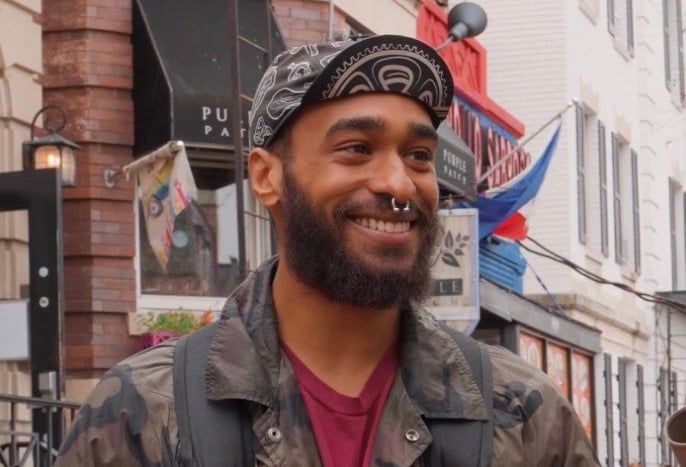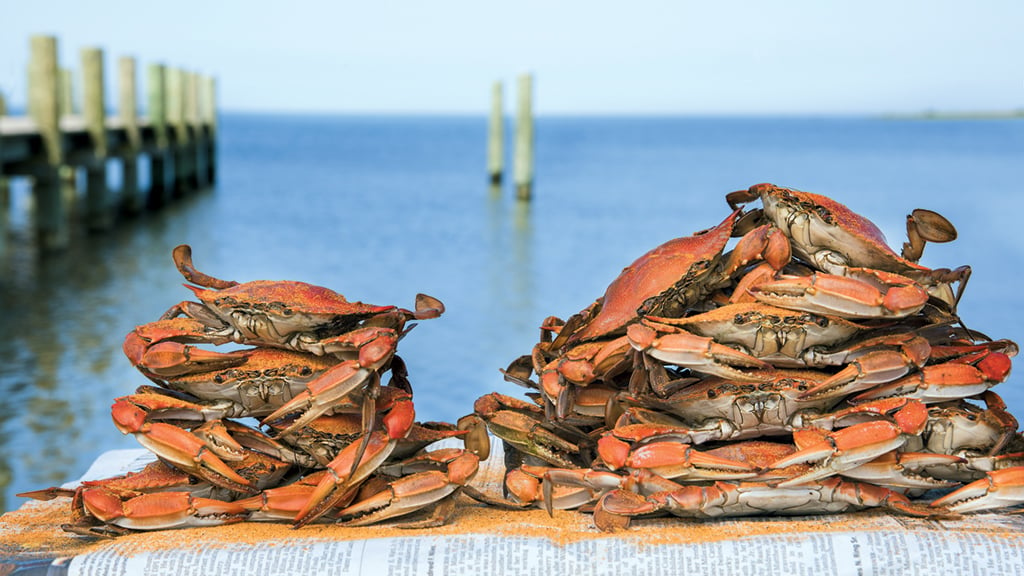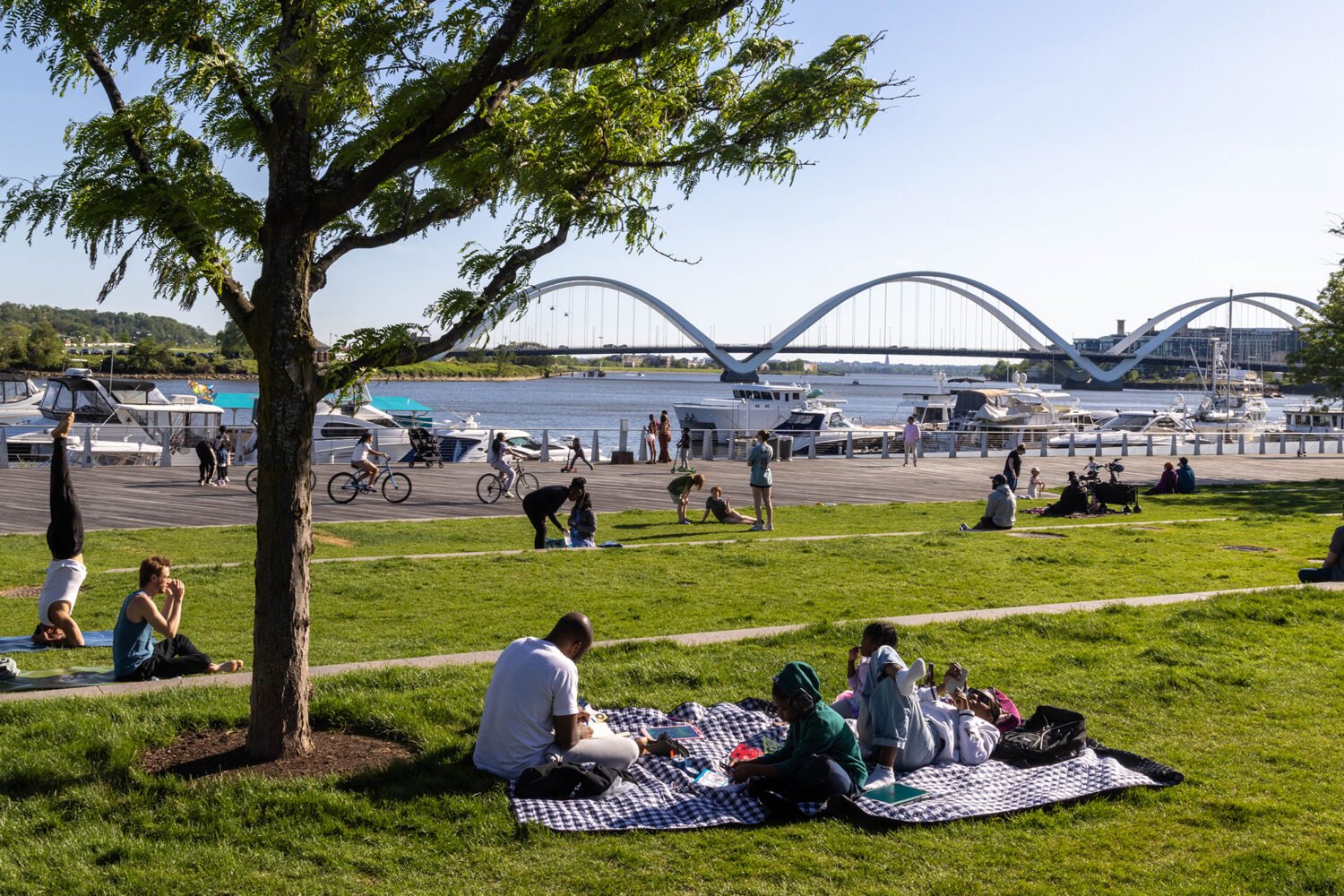The first fleet of delivery robots officially rolls out in DC today after two weeks of testing. Starship Technologies teamed up with San Francisco-based delivery company Postmates for the launch, the first in the US.
Initially a group of around 20 bots will make short deliveries—mostly under a mile—in the Georgetown and 14th Street corridor, with more neighborhoods to come in the near future. The autonomous coolers-on-wheels essentially act like any Postmates delivery service. An app user orders, say, items from a nearby convenience store. The vendor is notified, and a robot is dispatched from one of several hubs. Goods are placed in a temperature-controlled bag in the bot’s sealed compartment, which can only be unlocked with a code that’s sent to the customer. The robot then makes its way to the destination, and voila, that $10 order of snacks and soda is that much more awesome.
Postmates makes over 2 million deliveries a month nationwide using a fleet of cars, bikes, scooters, and average humans on foot. The latter is what stands to be eventually replaced by robots—next in Redwood City, California, and eventually in every city Postmates operates.
“If you’re ordering a convenience item from a couple of blocks away, it’s not worth paying a delivery fee,” says Russell Cook, senior vice president of operations at Postmates. “What we see with the robots in the future is being able to drive down the cost of those deliveries around 80 to 90 percent, and open a whole new class of commerce in the city.”
The delivery robots, which run exclusively on sidewalks, also hold environmental promise since they run on clean energy.
Of course, there are also drawbacks to losing the human touch. The six-wheeled vehicles are equipped with nine cameras, elaborate GPS systems, and ultrasonic sensors on all sides that can track distance and obstacles (much like on a car). They can sense to slow down in crowds, or speed up to 4 miles per hour in the open. Still, Cook says the bots are known to occasionally get held up by tree roots, and are still mastering DC’s many crosswalks that have no timed lights. They’re also only able to hold one delivery at a time, and can’t fit certain items, like an extra-large pizza.
Overall though, the roaming has been smooth—including the special legislation needed to allow the new wheeled vehicles on sidewalks, which the District passed last year. Surprisingly, no one has stolen or tampered with the bots, though they’re heavier and harder to pick up than they look. If and when someone attempts to steal one, an alarm will sound and GPS tracking systems will help with swift recovery. But what about accidental run-ins with joggers and dogs?
“If it sees people coming in close proximity, it stops,” says Cook. “It also has a flag on it, so even though it’s low, it can’t sneak up behind you without you realizing it.”
Currently there’s no way to demand a bot, but if you’re in the right neighborhood and too lazy to walk a few blocks for a sandwich, chances are a Postbot could be at your door.

